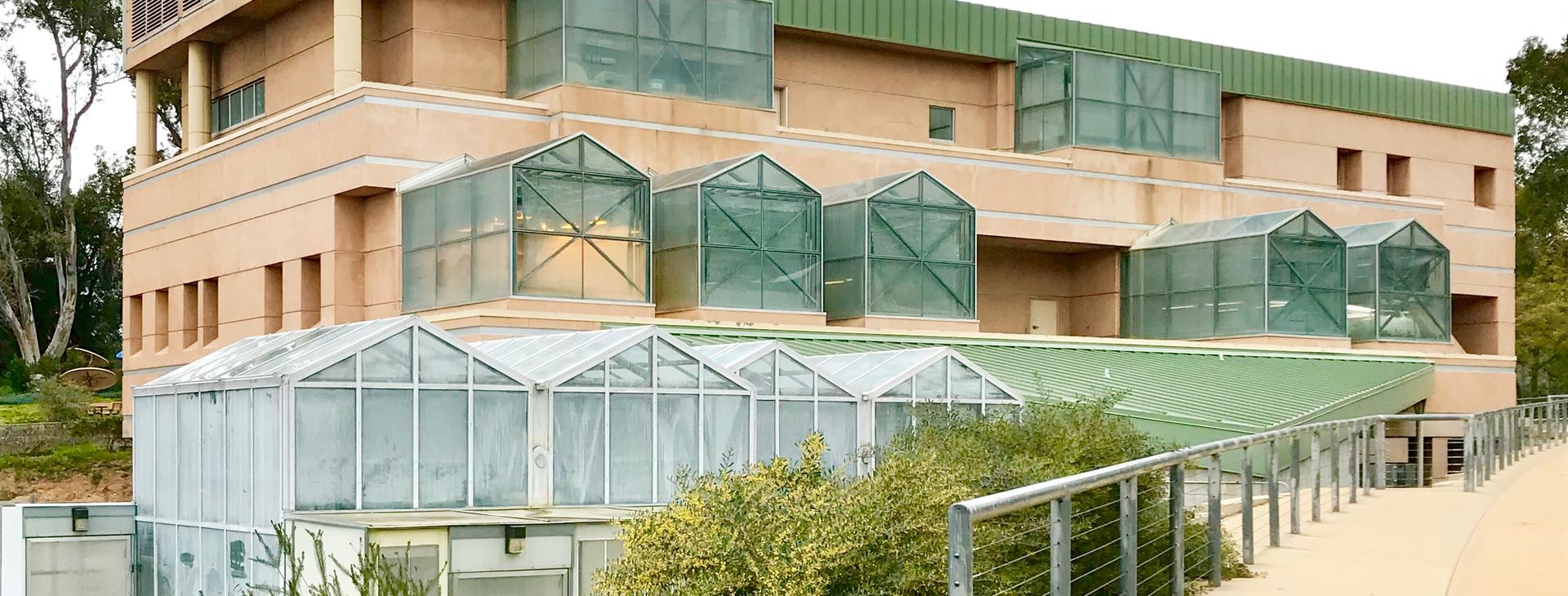What is a Quarantine facility? It is a building where researchers can study organisms in enforced isolation and restriction of free movement prevents unwanted organisms from spreading (diseases, weeds, pest arthropods, invertebrates & vertebrates).
Purpose of the I & Q Facility:
The Mission of the I & Q facility at UCR is to enhance research on organisms (e.g., arthropods, weeds, nematodes) affecting California's agricultural, natural, and urban environments. The I & Q facility is rated to BioSecurity level three, meaning that it is designed to contain small biological agents. UCR's I & Q facility is probably the largest and most advanced in the USA and arguably the world, as long as the military facilities such as Fort Dettrick that house lethal microbes like the Ebola virus are not considered. The total price tag was $15 million.
Two quarantine concepts in biological control:
- Proactive incursion management at the border - quarantine procedures keep out unwanted pestiferous organisms. Usually enforced by regulatory officials (e.g., border patrol/customs inspectors) outside of a containment facility.
- Risk management of natural enemies - post invasion reactive management strategies with natural enemies are risk averse and quarantine applied to ensure safety of natural enemies, eliminate undesirable contaminants from importations (e.g., hyperparasitoids, diseases), and take steps to make sure environmental problems are not exacerbated further via a biological control project. Usually enforced by scientists or biosafety officers within a containment facility.
Construction Time Line:
The official opening ceremony for the new I & Q Facility was conducted on Friday May 4, 2001, and the ground breaking for the new I & Q building occurred almost three years earlier on July 2, 1998. Funding for the I & Q came from three sources: UC, the State of California,the Federal Government and the total price tag was $15 million.
The old I&Q building which was in service for over 70 years, along with the old entomology building was demolished in December 2008.
Building Statistics:
The 28,000 square foot I & Q facility cost $15 million to construct and quadruples the current quarantine space available on campus. The new I & Q replaces the old Insectary and Quarantine facility that had been in operation since the 1930's.This old building was added to in the 1960's as demand increased for greater quarantine space until it finally was considered to outdated to keep maintaining and modifying.
The new I & Q building has two receiving rooms, six research laboratories, 12 greenhouses, and 64 rearing rooms. Some rooms are specially designed for moth and aquatic insect rearing. The building has been equipped with state of the art temperature and humidity controls, light regulation, air filtration, and waste water treatment. Anything entering the quarantine area in the building must be heat treated before removal. Consequently, all tools, cameras, microscopes etc are dedicated to the quarantine wing and will not be removed. E-mail and the internet has greatly simplified the movement of data, information, general communication in the quarantine section.
This is one of two (UCD) three-stage quarantine facility in California, and one of only four insectaries west of the Rocky Mountains.
The I & Q Has Two Major Purposes:
- It permits researchers to process, study, characterize, and propagate foreign parasites and predators that have been collected abroad and sent to California for the purpose of releasing them to control accidentally introduced exotic insect pests. Process ensures that to the best of current knowledge, only specific beneficial organisms leave the I & Q to enter the I for mass rearing, and eventual liberation and establishment.
- Helps facilitate proactive studies on invasive species not yet present in California. The I & Q supports UCR's position on the cutting edge of entomological research. It helps to advance the study of exotic pests, evaluate potential natural enemies, and in develop genetically engineered plants and insects.
Regulations:
- UCR I & Q had to be certified by USDA-APHIS and is subject to regular inspection (e.g., pumping rooms full of non-toxic smoke to look for leaks etc.)
- USDA-APHIS-PPQ sets all of the standards & guidelines for all state and federal biological control quarantine facilities. Individual states may set their own additional regulations (California has done this - releasing natural enemies is a 2-tier process state and federal approval required.)
- There is no legal binding obligation for one state to ensure that its natural enemies will not be harmful to another state should they migrate!
- Permits to move living material between states and internationally required. Strict enforcement of packaging - double/tripled packed.
- Homeland security issues over-ridden commonsense procedures when moving natural enemies domestically & internationally. APHIS rolling back on some of these restrictions. California led a consortium of researchers from FL & HI threatening senatorial intervention if nothing happened. Two way attack - needling for reform from researchers, and the massive hammer of Senator Feinstein's office ready to fall from the top. APHIS incredibly risk averse, doing nothing the safest option, as no liability can result from existing regulations.
Procedures for the Insectary and Quarantine:
- Material must be shipped in correct packaging with appropriate paperwork
- I & Q officer (Imad Bayoun or Serguei Triapitsyn ) receives material, checks paperwork, logs shipment, inspects contents in the quarantine receiving room, notifies APHIS/CDFA material has been received and is in quarantine.
- Small colonies started in the quarantine wing, screen for hyperparasitoids (a major problem with the red gum lerp psyllid project) and diseases (a major problem with heather beetle program - microsporidia; and fungal pathogens of gorse spider mites - fungicide sterilized mites!)
